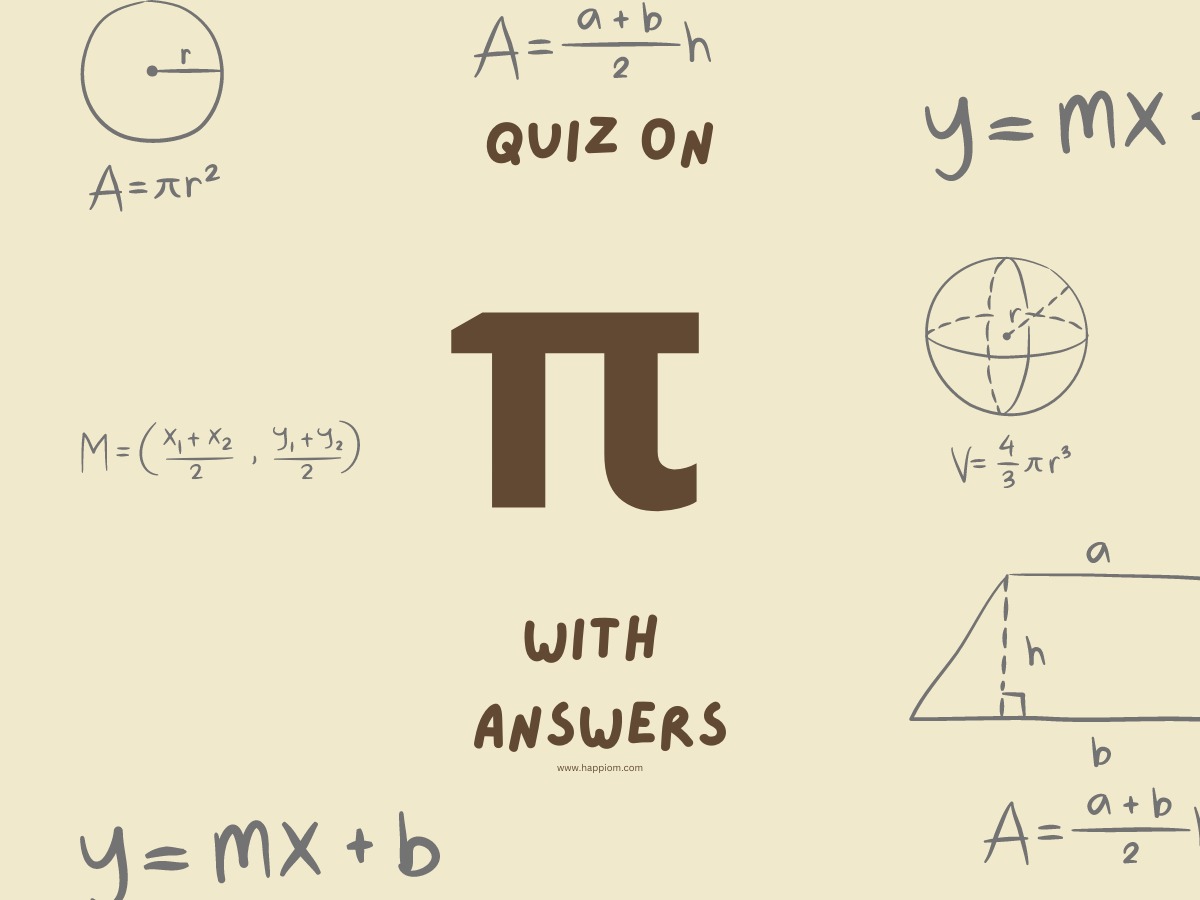
National Pi Day, celebrated on March 14th each year, is a momentous occasion in the realm of mathematics. This day pays homage to the mathematical constant π, representing the ratio of a circle’s circumference to its diameter.
The significance of March 14th lies in its numerical representation – 3/14 – which corresponds to the first three digits of π, 3.14.
Originating globally, National Pi Day has evolved into a celebration of mathematical curiosity and ingenuity, inspiring enthusiasts of all ages. Pi has implications across various fields of science and mathematics.
Below are the list of 20 questions with 4 options for each question, you can refer the answers for each question at the bottom of this article:
1. What is the approximate value of pi (π)?
a) 3.14
b) 2.71
c) 4.13
d) 1.62
2. Who is credited with the first calculation of π?
a) Euclid
b) Archimedes
c) Pythagoras
d) Isaac Newton
3. Which ancient civilization was the first to discover an approximation of pi?
a) Greek
b) Egyptian
c) Babylonian
d) Chinese
4. What is the ratio of a circle’s circumference to its diameter?
a) π
b) 2π
c) π/2
d) 4π
5. What mathematical constant is represented by the Greek letter π?
a) Phi (φ)
b) Delta (Δ)
c) Theta (θ)
d) Pi (π)
6. Which famous mathematician proved that π is irrational?
a) Carl Friedrich Gauss
b) Leonhard Euler
c) Isaac Newton
d) Johann Carl Friedrich Gauss
7. What is the formula to find the area of a circle?
a) A = πr^2
b) A = 2πr
c) A = 1/2πr
d) A = πr
8. Which mathematician is often credited with the first use of the Greek letter π to represent the ratio of a circle’s circumference to its diameter?
a) Euclid
b) Pythagoras
c) Archimedes
d) Euler
9. What is the value of pi (π) rounded to two decimal places?
a) 3.15
b) 3.12
c) 3.13
d) 3.14
10. In what century did the use of the symbol π become popular?
a) 16th century
b) 17th century
c) 18th century
d) 19th century
11. Which mathematician famously calculated π to many decimal places using a series expansion?
a) Isaac Newton
b) Gottfried Wilhelm Leibniz
c) Srinivasa Ramanujan
d) Leonhard Euler
12. What is the circumference of a circle with a diameter of 10 meters?
a) 31.4 meters
b) 62.8 meters
c) 15.7 meters
d) 50.24 meters
13. What is the diameter of a circle with a circumference of 20π meters?
a) 10 meters
b) 20 meters
c) 40 meters
d) 5 meters
14. What is the formula to find the circumference of a circle?
a) C = 2πr
b) C = πr^2
c) C = π/d
d) C = 1/2πr
15. Who introduced the concept of the number π as the ratio of the circumference of a circle to its diameter in his work “Measurement of a Circle”?
a) Euclid
b) Pythagoras
c) Archimedes
d) Aristotle
16. What is the value of π squared (π^2)?
a) 6.28
b) 9.86
c) 9.42
d) 9.87
17. Which of the following is an infinite series that converges to π?
a) 4/1 – 4/3 + 4/5 – 4/7 + …
b) 1 + 1/2 + 1/4 + 1/8 + …
c) 1 + 1/3 + 1/5 + 1/7 + …
d) 1 – 1/3 + 1/5 – 1/7 + …
18. What is the ratio of the circumference of a circle to its radius?
a) 2π
b) π/2
c) 4π
d) π
19. Which of the following formulas can be used to calculate the volume of a cylinder?
a) V = πr^2
b) V = πr^2h
c) V = 2πr
d) V = π/d
20. What is the approximate value of pi (π) to 10 decimal places?
a) 3.1415926536
b) 3.141592654
c) 3.141592653
d) 3.1415926542
Answers:
- a) 3.14
- b) Archimedes
- c) Babylonian
- a) π
- d) Pi (π)
- d) Johann Carl Friedrich Gauss
- a) A = πr^2
- c) Archimedes
- d) 3.14
- a) 16th century
- b) Gottfried Wilhelm Leibniz
- b) 62.8 meters
- a) 10 meters
- a) C = 2πr
- c) Archimedes
- a) 6.28
- a) 4/1 – 4/3 + 4/5 – 4/7 + …
- a) 2π
- b) V = πr^2h
- a) 3.1415926536
Hope you liked the quiz!





